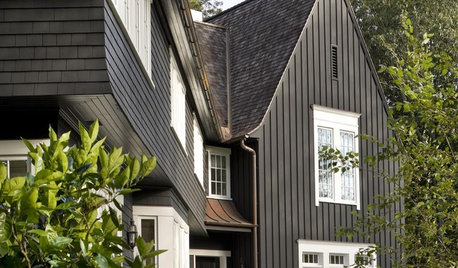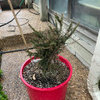Arborvitae Black Spots ID? Pics!
ocelaris
13 years ago
Related Stories

KITCHEN DESIGN12 Items Worth a Spot on Your Kitchen Counter
Keep these useful tools and accessories out in the open to maintain high function without spoiling the view
Full Story
UPHOLSTERYSeeking a Quiet, Relaxed Spot? Try Upholstering Your Walls
Upholstery can envelop an entire room, a framed panel or a single wall. See some design options and learn what to expect
Full Story
DECORATING GUIDESSpotted! Decorating Schemes Turn Over a New Leaf
Think big when it comes to bringing the outside in via tropical leaf prints
Full Story
COLORDreaming in Color: 8 Beautiful Black Bedrooms
Make your sleeping space elegant and calming sans cave-like vibe, with these tips for using black walls, flooring and furniture
Full Story
EXTERIOR COLORExterior Color of the Week: Bewitching Black
Think you’ve got what it takes to pull off this bold, trendy color choice for exteriors?
Full Story
COLOR11 Reasons to Paint Your Ceiling Black
Mask flaws, trick the eye, create drama ... a black ceiling solves a host of design dilemmas while looking smashing
Full Story
FLOORSDrama’s Afoot With Striking Black Floors
Be bold. Be brave. Drench your floors in black for a memorable interior scene
Full Story
BLACKCooking With Color: When to Use Black in the Kitchen
Consider sampling Caviar or Cracked Pepper on your kitchen walls or cabinets for richness and impact
Full Story
BATHROOM DESIGN11 Smashing Black Bathrooms
Going dark in the bath amps up the drama and lets metallic finishes shine
Full Story
MOST POPULAR11 Reasons to Paint Your Interior Doors Black
Brush on some ebony paint and turn a dull doorway into a model of drop-dead sophistication
Full Story










ocelarisOriginal Author
ken_adrian Adrian MI cold Z5
Related Professionals
Carlisle Landscape Architects & Landscape Designers · Surprise Landscape Architects & Landscape Designers · Bellflower Landscape Architects & Landscape Designers · Wixom Landscape Architects & Landscape Designers · Brookfield Landscape Contractors · Cupertino Landscape Contractors · East Haven Landscape Contractors · Harvey Landscape Contractors · Kaysville Landscape Contractors · La Mirada Landscape Contractors · Lake Worth Landscape Contractors · New Baltimore Landscape Contractors · Rockland Landscape Contractors · Salem Landscape Contractors · West Covina Landscape ContractorsocelarisOriginal Author
dcsteg
ocelarisOriginal Author
salicaceae
ocelarisOriginal Author
jerschgen_kc_rr_com
gardener365